Colonel Charles Young Marker
Introduction
Text-to-speech Audio
Images
Colonel Charles Young Marker. Photo by Christopher Busa-Peck.
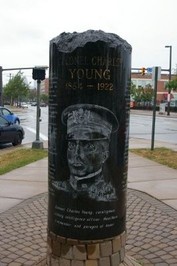
The back of the Colonel Charles Young Marker. Photo by Busta-Peck.
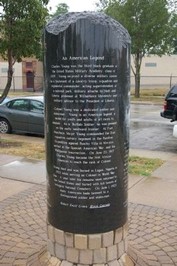
"The thing then to be desired above all others is confidence in one's self..." Charles Young. Photo by Busta-Peck.
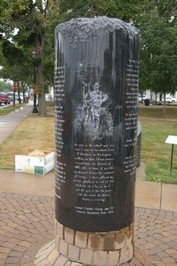
Another view of the marker. Photo by Busta-Peck.
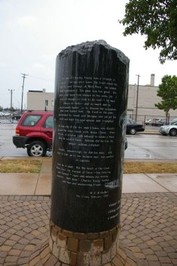
Top of the marker. Photo by Busta-Peck.
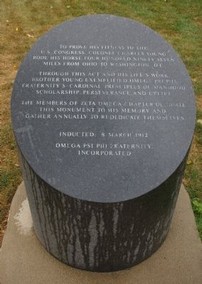
The marker between two trees. Photo by Busta-Peck.
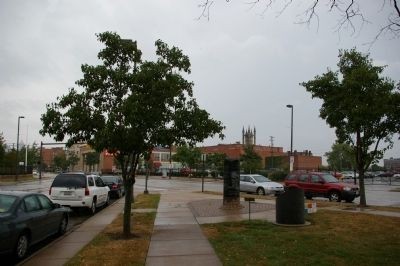
A photo of Colonel Charles Young in Mexico in 1916.
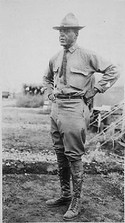
Backstory and Context
Text-to-speech Audio
Colonel Charles Young is recognized as a successful and dedicated soldier and statesman. Young reached the rank of Colonel on June 22, 1917 and was the first African American to do so. Young was also a “Buffalo Soldier." Buffalo Soldiers were part of the U.S. 10th Cavalry Regiment of the United States Army. It was formed on September 21, 1866 at Fort Leavenworth, Kansas. Young commanded the 2nd squadron 10th Calvary regiment in the Punitive Expedition at Fort Huachuca against Pancho Villa in Mexico. Colonel Charles Young also served in the Spanish-American War and helped with the Philippine Insurrection.
As soon as the school year was over, I rode on horseback from Wilberforce to Washington, walking on foot fifteen minutes in each hour, the distance of 497 miles to show, if possible, my physical fitness for command of my troops. I there offered my services gladly at the risk of life, which has no value to me if I cannot give it for the greater ends for which the United States is striving. – Colonel Charles Young
Sources
Charles Young Buffalo Soldiers National Monument. National Park Service. Accessed August 31, 2018. https://www.nps.gov/chyo/index.htm.
